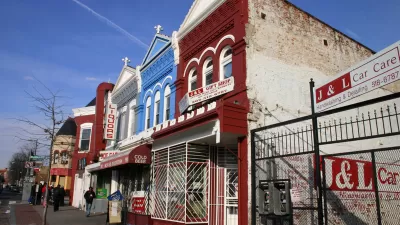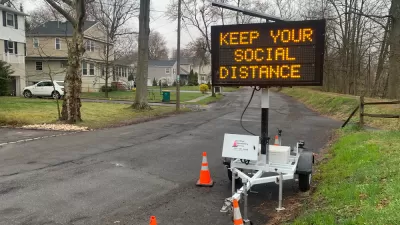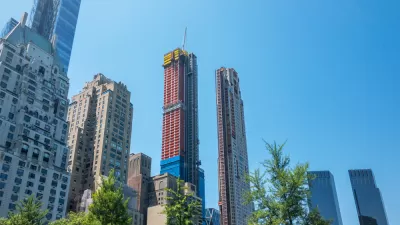Limiting development has been a powerful tool for anti-gentrification activists, but have these policies had counter-productive effects?

In a piece for The Atlantic, Jacob Anbinder challenges the popular thesis that new housing construction in historic neighborhoods causes gentrification, calling the concept misguided and pointing to declining rents during 2020 as proof.
Since the mid-20th century, housing activists and politicians have painted development as broadly detrimental to affordable housing, arguing that this "gentrification-industrial complex" is a key driver of displacement and rising housing costs. This "growth revolt" brought together stakeholders from across the political spectrum, pitting wealthy homeowners and low-income renters against developers. For once, "nature enthusiasts, architectural historians, homeowners, and rock-ribbed socialists" could all agree on something.
"This anti-growth partnership presumes that the interests of the landed and the landless are aligned—that a policy of more tightly regulated development can both generate wealth for those who own property and redistribute it to those who don’t."
The 1970s and 1980s saw the growth of design review boards, height limits, and other density restrictions that continue to shape urban development today. Anbinder argues that these cosmetic changes, which treat luxury construction as a cause rather than consequence of neighborhood change and gentrification, don't acknowledge the true causes of rising housing costs. In his assessment, slow growth policies may have in fact exacerbated the current housing crisis by limiting the number of available units. The difference, he writes, is in ownership. "The telltale sign of a neighborhood in transition isn’t a yoga studio or a high-rise apartment building. It is an old rowhouse, meticulously renovated."
FULL STORY: The Pandemic Disproved Urban Progressives’ Theory About Gentrification

Alabama: Trump Terminates Settlements for Black Communities Harmed By Raw Sewage
Trump deemed the landmark civil rights agreement “illegal DEI and environmental justice policy.”

Planetizen Federal Action Tracker
A weekly monitor of how Trump’s orders and actions are impacting planners and planning in America.

The 120 Year Old Tiny Home Villages That Sheltered San Francisco’s Earthquake Refugees
More than a century ago, San Francisco mobilized to house thousands of residents displaced by the 1906 earthquake. Could their strategy offer a model for the present?

LA’s Tree Emergency Goes Beyond Vandalism
After a vandal destroyed dozens of downtown LA trees, Mayor Karen Bass vowed to replace them. Days later, she slashed the city’s tree budget.

Sacramento Leads Nation With Bus-Mounted Bike Lane Enforcement Cameras
The city is the first to use its bus-mounted traffic enforcement system to cite drivers who park or drive in bike lanes.

Seattle Voters Approve Social Housing Referendum
Voters approved a corporate tax to fund the city’s housing authority despite an opposition campaign funded by Amazon and Microsoft.
Urban Design for Planners 1: Software Tools
This six-course series explores essential urban design concepts using open source software and equips planners with the tools they need to participate fully in the urban design process.
Planning for Universal Design
Learn the tools for implementing Universal Design in planning regulations.
Ada County Highway District
Clanton & Associates, Inc.
Jessamine County Fiscal Court
Institute for Housing and Urban Development Studies (IHS)
City of Grandview
Harvard GSD Executive Education
Toledo-Lucas County Plan Commissions
Salt Lake City
NYU Wagner Graduate School of Public Service





























